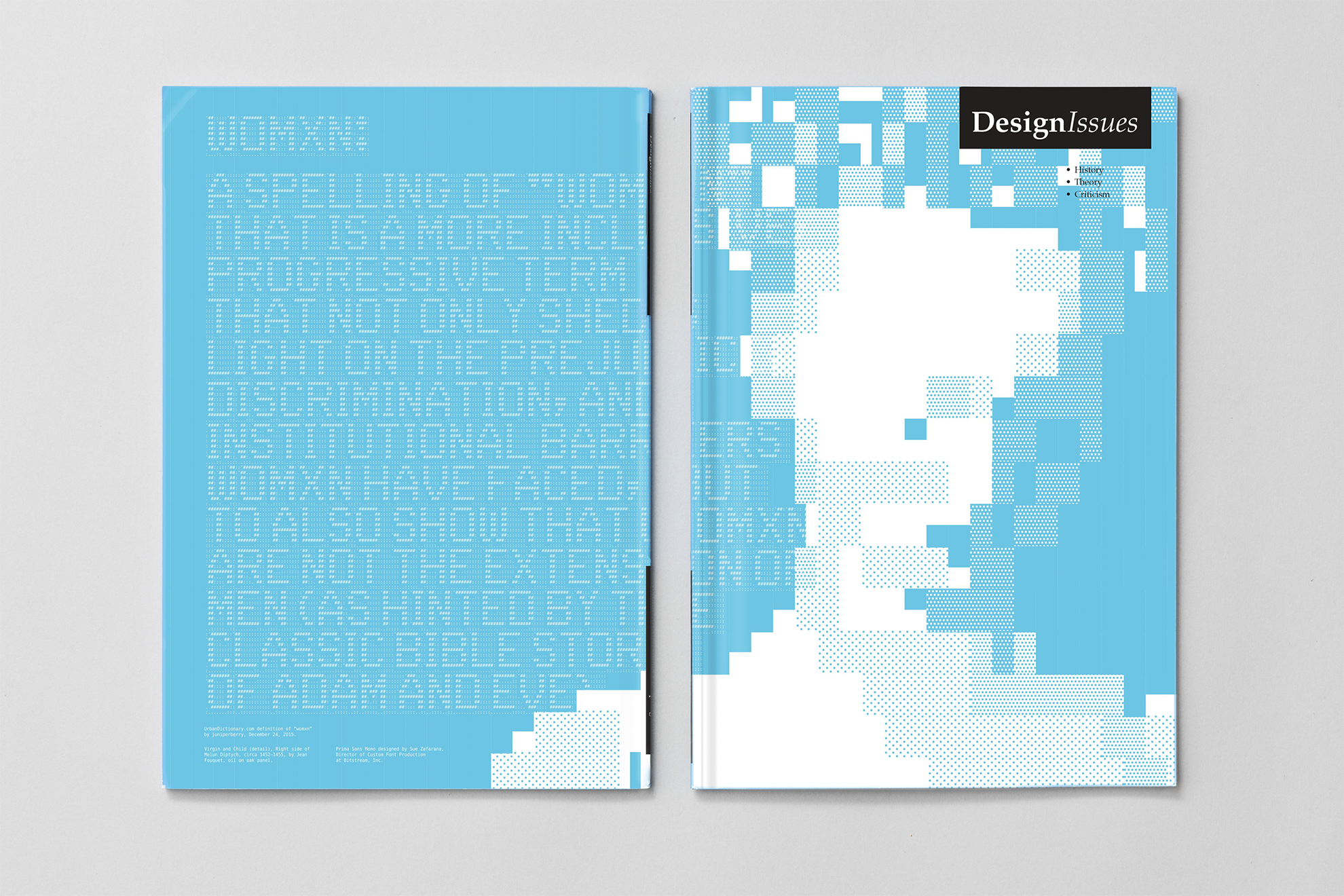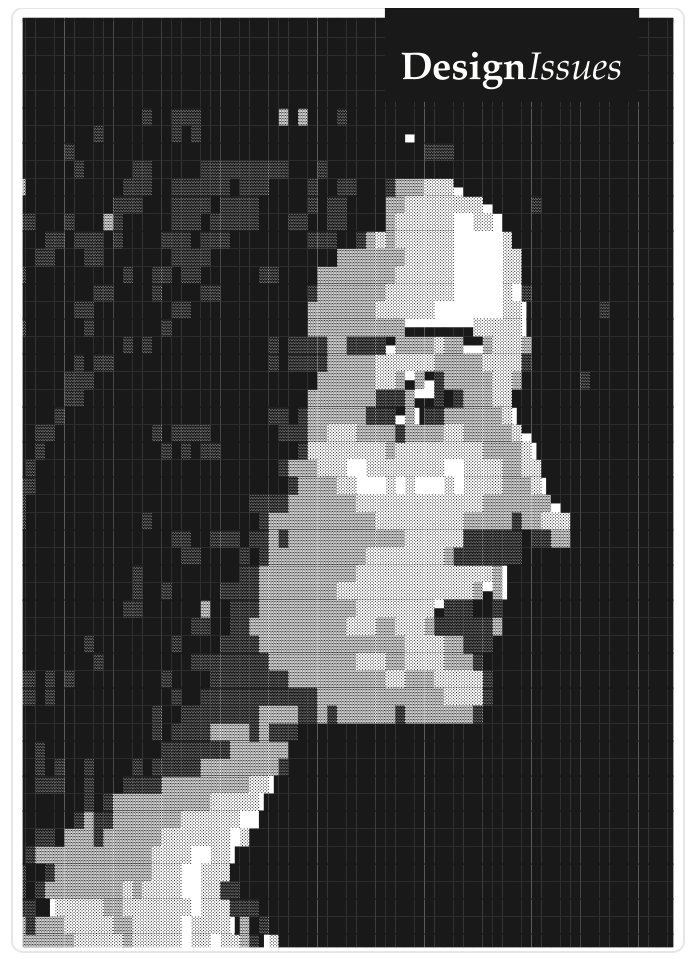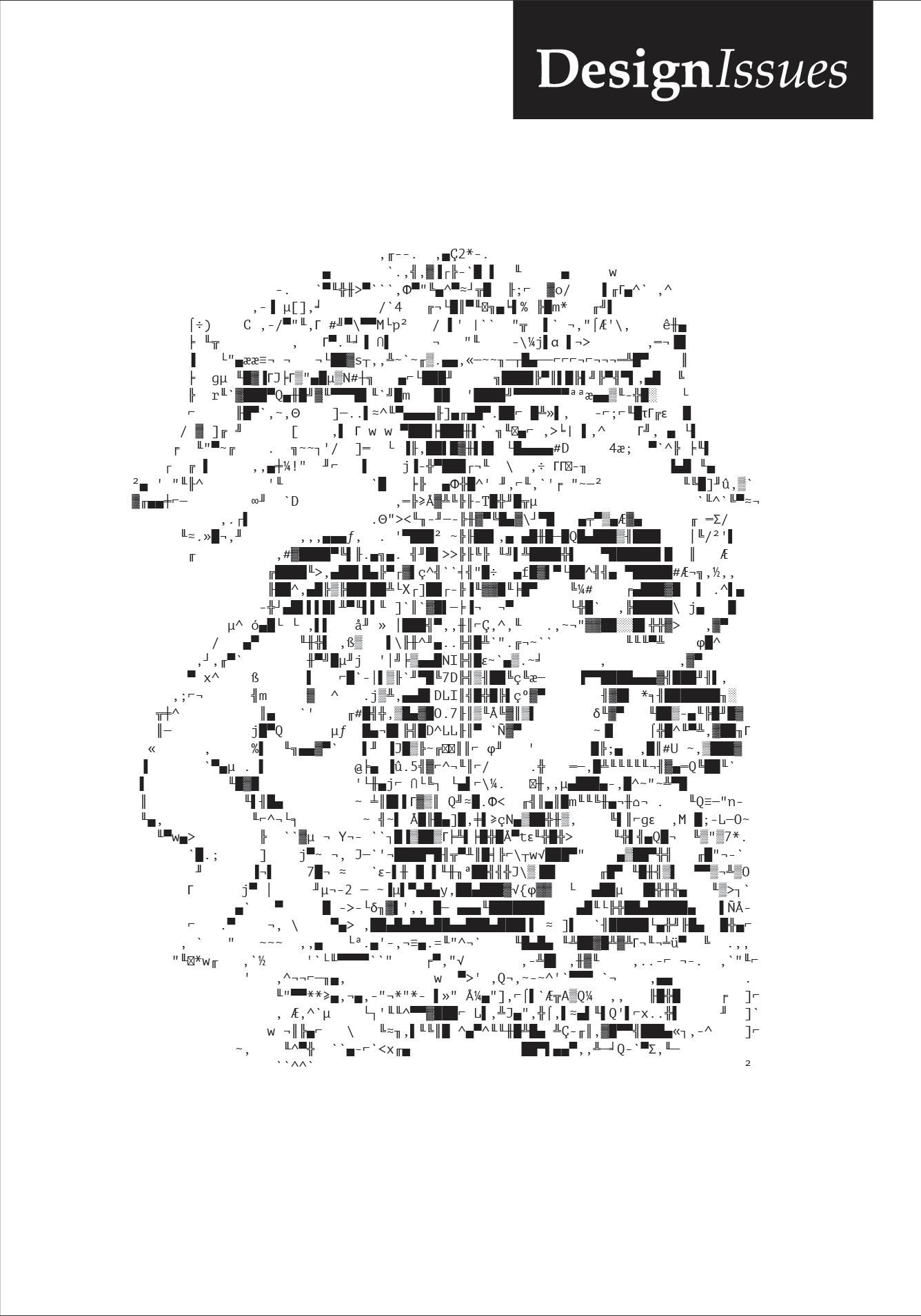Design Issues. Volume 38, Issue 1
ISSN 0747-9360
EISSN 1531-4790This Design Issues cover design uses the 8-bit extended ASCII language (acronym of American Standard Code for Information Interchange), a subset of Unicode, in order to imply a complex history between encoded images, womxn, art, and design. The monospace typeface used throughout this work is Prima Sans Mono, one of the few monospace typefaces designed by a woman. The typeface’s creator, Sue Zafarana, was part of the 1984 design team that developed the first digital font library.
Iterations and Sketches
This work uses a form of data compression known as vector quantization to translate an image into a set of glyphs. My cover design uses this ASCII encoding to simultaneously obscure and reveal a portion of the Virgin from the Melun Diptych (c. 1452 –1455). A late Gothic/early Renaissance nude by Jean Fouquet, this woman was as much a functional design object as she was a Humanistic portrayal of womanhood. My design further blurs the line between realistic “beauty” and the decorative needs of society, just as the original Fouquet diptych was used in French royal courts. Encoding the Virgin in ASCII puts further emphasis on grid structure, pattern recognition, emoticons, and tessellations.
Final Design
This cover is also a rumination on language, representation, and technology—particularly in an age of glyphs and emojis being staples for expressing ideas online. More and more, the library of Unicode expands as glyphs allow computers to not only communicate with one another (as was the original function of ASCII), but allow humans to speak the language of computers to other humans. In an age of abstracted identities online, this work seeks to speak in the language of both the human and the machine.
The 8-bit ASCII glyphs specifically used are: 176, 177, 178, 219, 220, 221, 222, 223, 254.
Previous designers that have created covers for Design Issues are among some of the top designers in the world: Louise Fili, Michael Beirut, Massimo Vignelli, Paula Scher, and Milton Glaser (left to right), as wells as my former mentor who passed in 2015, Robert Sedlack (below). As an homage to Robert, I pulled the same Pantone 306 C azure (aa-shure) / sky blue and used it in my design.













